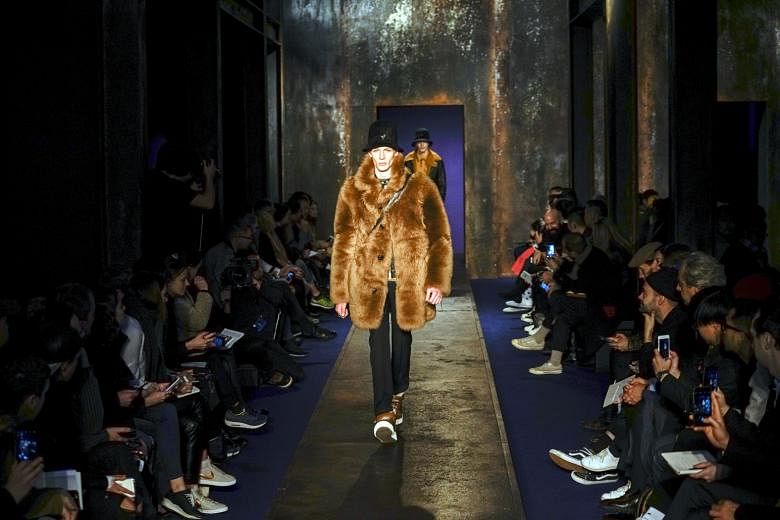NEW YORK • If there is anything more unnerving than the sight of a greasy black grizzly bear lumbering your way, it is the look of that grizzly, dismantled and slung like a poncho across Leonardo DiCaprio's brawny back, its head intact - a 45kg souvenir of his character's trials in the wild.
That bear coat is one of the more eye-catching numbers to drape Hugh Glass, DiCaprio's trusty mountain man in the frontier epic The Revenant.
The Alejandro Gonzalez Inarritu film, set in the Missouri wilderness of the early 1800s, is an ode to the survivalist ethos and, by extension, a frontier aesthetic as much entrenched these days in the twin realms of pop culture and fashion as it is in the national psyche.
Warding off bear attacks, Indian raids and catastrophic snowstorms, the film's characters, in their patched skins, whipstitched blankets, frock coats and breeches, made a compelling, if inadvertent, fashion statement - one being simultaneously echoed in the world of style. Its appeal these days seems all but inescapable.
"There is something heroic to these men living in nature and dressing in a simple, natural, organic fashion," said Ms Jacqueline West, the Oscar-nominated costume designer of The Revenant.
A similar survivalist swagger materialised a year ago in the fall 2015 men's collections, the mood expressed in the outdoorsy, performance-wear of brands such as Stone Island; Acronym, a German cult favourite; and White Mountaineering, a Japanese label, each built on so-called tactical dressing, showcasing tech and combat-derived looks made from high-performance materials with trade names such as Polartec and Gore-Tex, complete with multiple tool pockets and heat-sealed seams.
Last month, at the fall 2016 menswear shows, wild and woolly Western-inflected counterparts of that cushioned-and-quilted tech look were released on the European runways. Beefy shearling jackets and furs, buffalo plaids and Pendleton-style blankets muscled their way into shows such as Dolce & Gabbana, where roughed-up curly lamb coats were offered and Dries Van Noten and Burberry each issued husky man-furs atop outdoorsy plaid shirts or fleeces.
White Mountaineering returned with a trapper-tinged collection called Trailblazer and Coach celebrated doughty American archetypes such as Kit Carson with a succession of patched leather jackets, lumberjack shirts, bandannas and bucket hats virtually bristling with flinty resourcefulness.
As the Coach handout stated, "The collection was about finding the heroic in everyday life."
Not bulletproof by any stretch, the clothes were trend-resistant nonetheless. Pretty much as Stuart Vevers, the designer, intended. "I wound up thinking how old-fashioned it seems to wear a tricky, tricksy outfit that seems over- designed," he said.
In The Revenant, as on the runway, the folksy, shredded but eminently durable look speaks volumes.
Ms West ascribed its resonance to a general appetite for simplicity and permanence that extends to people's wardrobes. "We are so inundated with stuff in our closets."
In stark contrast, the trappers and Indians of the film hang on to their few garments, wearing them throughout their gruelling two- year expedition.
NEW YORK TIMES
•The Revenant is showing in cinemas here

